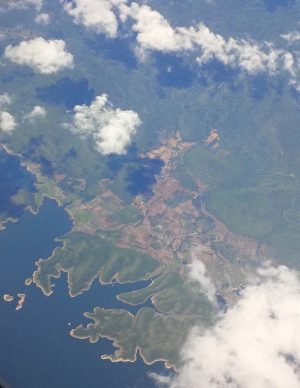Earlier this month, Myanmar announced the establishment of a coast guard. While the development marks the realization of a years-long quest, questions remain about the future direction of the service as well as its evolution amid the country’s overall outlook.
Over the past few years, several Southeast Asian governments have begun to consider investing more in coast guard or coast guard-like institutions or setting up new forms of maritime law enforcement agencies (MLEAs). The trend has sparked a rising conversation about the significance not only for the countries themselves, but also for regional stability and for the broader geopolitical dynamics in the Indo-Pacific region.
Myanmar has been among the countries considering the establishment of a coast guard. Defense officials have long made the case for a coast guard to protect its over 2,000-kilometer-long coastline and surrounding territorial waters, citing the wide range of responsibilities currently assumed by the Myanmar navy as well as the costs to the lack of additional capabilities, be it revenue lost to illegal smuggling activities or the inability to quickly detect and respond to unexpected incidents and emerging crises.
The momentum had gained further steam in recent years amid evolving strategic realities, with the defense ministry submitting a proposal to parliament for the establishment of a coast guard in March 2019 under the now-ousted National League of Democracy (NLD) government. At that time, there were suggestions that the new coast guard could be followed by several developments, including the setting up of an integrated command center with personnel from various organizations such as the police, customs, immigration, fisheries and ports authorities.
Earlier this month, Myanmar finally broke ground with the announced formation of its new coast guard. The launch occurred in a ceremony on October 6 at Thilawa Port in Yangon, Myanmar. The occasion was attended by top defense officials including military chief Min Aung Hlaing, who has assumed control of the country since the Tatmadaw took power in February.
The launch marked the realization of a years-long quest for a coast guard. In his speech, Min Aung Hlaing unsurprisingly focused more on the benign aspects of the coast guard’s focus, including functions such as search and rescue, environmental protection, and law enforcement, which could advance the country’s broader goals. These include developing maritime and coastal tourism and safeguarding sea lines of communication and deep sea ports in order to facilitate international trade.
The ceremony also saw an initial focus on the shape of the coast guard. Personnel-wise, Brig. Gen. Ko Ko Kyaw was appointed as the new service’s director general. And in terms of capabilities, to start, four vessels were transferred from the navy to equip the new coast guard. Satellite imagery from IHS Janes suggested that two of the vessels, bearing the pennant numbers P 311 and P 312, were a coastal patrol craft and missile patrol craft respectively, while the other two patrol vessels resembled the Myanmar Navy’s PGM 43 class and bore the pennant numbers P 411 and P 412.
How exactly the new coast guard develops from here remains to be seen. While the initial four vessels are a start, it is difficult to assess the coast guard’s ability to fulfill its long list of functions without a fuller sense of its planned total strength. More generally, while previous plans had been in place to follow on from the establishment of the new coast guard, including greater integration in the maritime domain, the status of these plans and specifics remains unclear. These details could prove critical in determining how the coast guard operates in practice within the broader scope of Myanmar’s maritime security space dominated by the navy.
The new service’s development will also not be without its challenges. Internally, the military is still consumed by the fallout from the February coup, with the continued political resistance against it, and the severe economic challenges lying ahead. Externally, while Myanmar may be able to draw on some of its external relationships such as that with Russia, the country’s current crisis also means it will be more challenging to diversify relationships to get new equipment as well as advance training through a broad range of relationships in the immediate future.
Nonetheless, the future trajectory of Myanmar’s coast guard will be important to watch moving forward. As we have seen with other Southeast Asian states, the development of maritime law enforcement agencies can have important implications with respect to the execution of maritime security domestically as well as the management of external bilateral, regional, and international relationships.

































